Teaching to heal the world
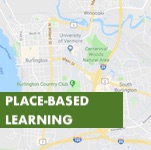 “How can we improve the systems we’re a part of?”
“How can we improve the systems we’re a part of?”
That’s the question my team posed to our 4th- through 6th-grade students last spring at The Cornwall School, in Cornwall VT. It was the start of a deep dive into education for sustainability.
What does education for sustainability look like in action?
Students chose a system to focus on: the school’s heating system, electrical system, or waste system. Multi-age groups formed to explore and improve these integral systems.
My group worked on the waste system, from trash to recycling to compost. How did we handle waste? How much were we creating? Where did it go when it left our building? What was working well? What could be improved?
Folks from our local solid waste district office visited us so we could learn more about how things work. Our facilities manager and school chef provided guidance. We conducted a waste audit. We analyzed compost data, and surveyed classrooms and interviewed people to explore what was happening in our system, and how we could improve it.
Then we got to work. We educated students and staff about what could be placed in recycling bins. We grouped waste receptacles in classrooms in a common location so that waste could be deposited into the correct bin. And we reported to the cafeteria about which meals were producing the most waste, and suggested alternatives.
This is education for sustainability.
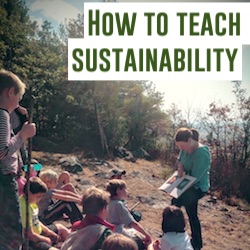
Education for Sustainability is a framework for education
Education for Sustainability (EFS) asserts that if we provide students with an education that:
- forges a connection to the human and natural communities that we are part of;
- helps students develop an understanding that the world is interconnected;
- and develops students’ sense of agency and their ability to make a difference through service-learning
then we are nurturing the development of citizens engaged in creating sustainable and democratic communities.
But what does this look like in the classroom?
Short answer: Place-based service-learning, rooted in the big ideas sustainability.
Longer answer: Sustainability is a complex concept for kids to grasp, so instead of tackling it head-on, we break it down into what we call the Big Ideas of Sustainability. Notice any similarities to the NGSS’s Crosscutting Concepts? It’s not a coincidence- sustainable human communities are grounded in the same principles that govern ecosystems – sustainable natural communities.
Then, we take these big ideas and build inquiry-based units integrating our local land and community that prompt students to explore, uncover, analyze, synthesize, and improve the quality of life.
How to build an EFS unit
To build an EFS unit, you select a big idea (for example, systems), then match it with an essential question (How do we improve the systems we are part of at Cornwall School?) and a few corresponding enduring understandings (Many smaller systems are part of larger systems. We can impact systems.). Then, you embed these ideas in a local context. For us, it was our school’s waste systems.
From there, the unit development follows the backward design process- now that we know what we’re aiming for (those big ideas and enduring understandings, coupled with any standards or proficiencies being targeted), how will we know when we get there (assessments), and what route will we take (learning plan)? Who are the community partners we can work with? What actions can students likely take?
Here are few tools that come in handy:
- Download a copy of the bigideasofsustainability here.
- This document breaks down the big ideas of sustainability and matches them with essential questions and enduring understandings. Use these or be inspired to creat your own: Big Ideas Enduring Understandings Essential Questions
- This EFS UbD Snapshot Template is a good place to begin your unit design
- To go deeper, use the full 3-page EFS full UbD template
- Here is an example of that 3-page UbD: Sustainable Economics UbD 2.1 PDF
- And here’s the full unit that goes with that example: Sustainable Economics – The Triple Bottom Line (1)
I believe education plays a pivotal role in the way we get there.
It started with the Lorax’s whispers in my young ears:
“Unless someone like you cares a whole awful lot, nothing is going to get better. It’s not.”
Those words were a call to action. And they led me to the classroom.
My first few years teaching middle school at a small charter school in Providence, RI, I made several bumbling attempts to infuse my curriculum with ecological and environmental concepts. We took our students to an orchard to pick apples, then spent the next day making applesauce. It’s warm cinnamony aroma enveloped us as we met in our novel study groups. But as we tasted the fruit of our labors one student remarked, “Miss Emily, this tastes just like the real applesauce we get at the store.”
That was the moment I realized just how disconnected we’ve become from all that sustains us.
We followed a few essential questions
At Cornwall, one year our focus was cause and effect. “Where does it come from? Where does it go?” Cliff formations along a local dirt road, energy and matter cycling through our garden and bodies, or even social drama on the playground. Then we planted vegetables in our school garden and composted our food scraps improve our own health and the health of the soil.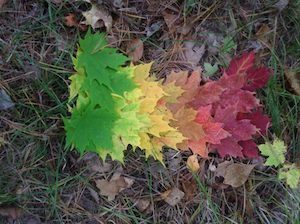
Another year we asked “How do we shape the land? How does the land shape us?” and dove deep into understanding interdependence through exploring the geography and geological history of our region of the Champlain Valley, human use of natural resources, and regional native cultures.
With that foundation of knowledge, we then partnered with several local farms so that students could uncover how the farmer shapes the land and the land shapes the farmer. And a few kids were lucky to pitch in for a carrot harvest! We climbed a lot of mountains. We made art with nature.
And we celebrated our journey to uncover who and where we are and how we can make a difference.
Why is education for sustainability important?
For me, it comes down to hope. Hope for the future and the planet and all her creatures. Including us. Hope for a better life for all.
When we help kids connect to who they are, foster deep connections with the human and natural communities that we are part of, help them understand the fundamental interconnectedness that hold us together, and when we create opportunities for them to develop agency- that is, help them to understand that each one of us, no matter how small, can make a difference- then, I believe this world may have a chance at a just and sustainable future.
I believe kids can change the world. Because they already have.


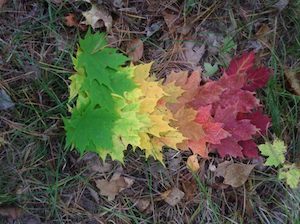
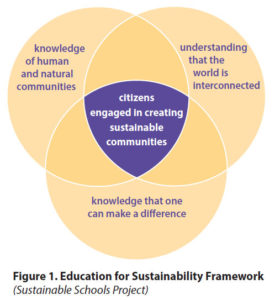
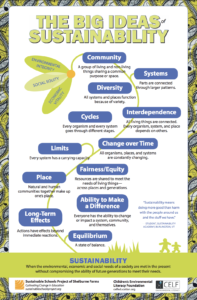
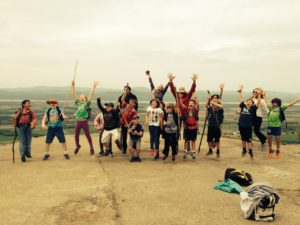
One Reply to “Why and how to teach education for sustainability”
Comments are closed.